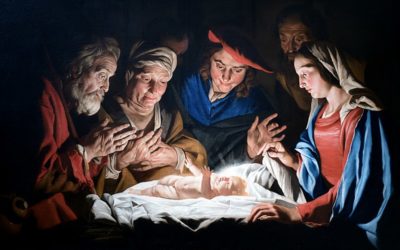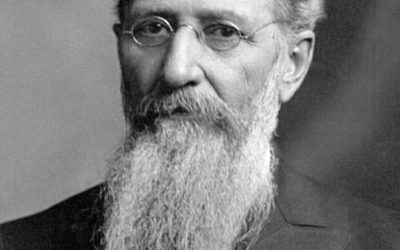Throughout the history of God’s dealings with His people, He has used physical objects to help people focus their faith. But He has also condemned the belief that the objects themselves have some kind of inherent magic, as though they are more powerful than their Maker. Such a belief is idolatry. Two Old Testament examples illustrate the importance of this distinction.
The Ephod
Anciently, under the Law of Moses, the high priest wore a vest or waistcoat as part of his ceremonial temple clothing. This vest was know as the ephod. Attached to the ephod was a breastplate, and the revelatory instruments known as Urim and Thummim were associated with the breastplate and ephod, probably fitting into a pocket in the breastplate (Exodus 28:30).
Over time, as you can imagine, the ceremonial vest or ephod came to be associated with divine power and communicating with God (see, e.g., 1 Samuel 23:6‒12, 30: 7‒8). People may have begun to believe that the power of God was in the vest itself, not in the priesthood power or faith that actuated the revelatory Urim and Thummim.
This mistaken belief reached the point that Gideon created a golden ephod and “put it in his city, even in Ophrah: and all Israel went thither a whoring after it: which thing became a snare unto Gideon, and to his house” (Judges 8:27). This idol may not even have been a vest at all, just an object with a similar name, perhaps evidence again of how far the people had strayed in their understanding.
The Brass Serpent
Much better known is the brass serpent erected by Moses at the command of God. When the children of Israel were bitten by fiery flying serpents, “the Lord said unto Moses, Make thee a fiery serpent, and set it upon a pole: and it shall come to pass, that every one that is bitten, when he looketh upon it, shall live” (Numbers 21:8).
In the New Testament, the apostle John interpreted the brass serpent as a symbol of Jesus Christ and his atoning sacrifice, emphasizing the importance of exercising faith in Christ as the key. “And as Moses lifted up the serpent in the wilderness,” John wrote, “even so must the Son of man be lifted up: That whosoever believeth in him should not perish, but have eternal life” (John 3:14‒15).
Likewise in the Book of Mormon, one of the later prophets named Nephi taught that the brass serpent was symbolic and required faith. Just as Moses “lifted up the brazen serpent in the wilderness,” Nephi explained, “even so shall he be lifted up who should come. And as many as should look upon that serpent should live, even so as many as should look upon the Son of God with faith, having a contrite spirit, might live, even unto that life which is eternal.” (Helaman 8:14‒15.)
But just as was true of the ephod, Old Testament people began to look at the brass serpent as some kind of magic object in and of itself, rather than as a symbol to help people focus their faith under priesthood direction. Eventually, the children of Israel began to treat the brass serpent as an idol or object of worship instead of God.
Finally, Hezekiah arose, a king of Judah who “did that which was right in the sight of the Lord” and “trusted in the Lord God of Israel; so that after him was none like him among all the kings of Judah, nor any that were before him” (2 Kings 18:3, 5). To restore proper worship among his people, “He removed the high places, and brake the images, and cut down the groves, and brake in pieces the brasen serpent that Moses had made: for unto those days the children of Israel did burn incense to it” (2 Kings 18:4).
Should Latter-day Saints believe that rods and seer stones (including Urim and Thummim) are magical objects? No. They are physical objects, sticks and stones. Physical objects can help us focus our faith, especially as part of priesthood ordinances or ceremonies, or sacred reminders of them. But they have no power in and of themselves.
Why don’t we see senior priesthood leaders using stones or rods today? In a 2015 Ensign article, two of my colleagues and I related an experience that Elder Orson Pratt, an apostle and later Church Historian, had with the Prophet Joseph Smith when Orson was a young convert:
“At a meeting on June 28, 1874, attended by President Brigham Young and many other General Authorities, Elder Pratt told his audience about being ‘present many times’ when Joseph Smith ‘was translating the New Testament.’ Seeing no interpretive instruments in use during the translation process, he wondered why Joseph ‘did not use the Urim and Thummim, as in translating the Book of Mormon.’
“As Elder Pratt watched the Prophet translate, ‘Joseph, as if he read his thoughts, looked up and explained that the Lord gave him the Urim and Thummim when he was inexperienced in the Spirit of inspiration. But now he had advanced so far that he understood the operations of that Spirit, and did not need the assistance of that instrument.’”



